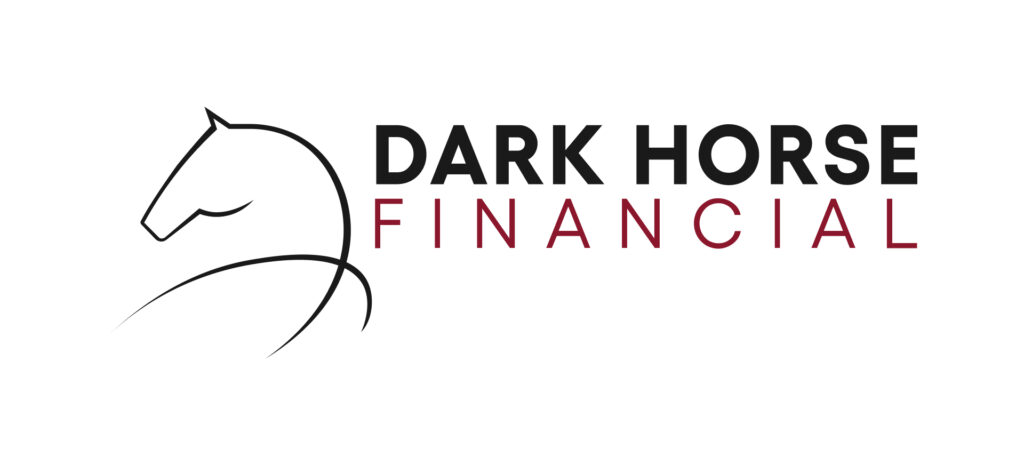Key Takeaways
- Debt recycling converts non-deductible debt (e.g., home loans) into deductible debt (e.g., investments) to reduce tax liabilities and build wealth.
- Market risk is a major concern, as investment values can fluctuate. To mitigate this, a financial planner might advise you to diversify your portfolio and invest for the long term.
- Interest rate risk can increase loan repayments. A potential way to mitigate this is to fix your loan rate or build a cash buffer to manage rising rates.
- If your investments underperform, there’s a risk to your cash flow. It’s advisable to budget carefully, maintain an emergency fund, and choose income-generating assets.
- Tax risk happens if the ATO deems your loan non-deductible. We recommend that any debt recycling strategy be overseen by your accountant or a financial planner.
- Debt recycling can be complex. If not managed properly, it can lead to financial issues. Work with a financial advisor and use tools like a debt recycling loan calculator.
- A potential way to debt recycle successfully is to follow a structured process. Assess your finances, set goals, choose the right loan, invest wisely, and monitor progress.
- Use a debt recycling loan calculator to estimate potential savings and ensure your strategy aligns with your financial capacity.
- Work with a lending professional experienced in debt recycling loans to access tailored solutions for your financial goals.
Debt recycling is a popular financial strategy in Australia, particularly among financially savvy individuals and those looking to build wealth through investments. It involves converting non-deductible debt (such as a home loan) into deductible debt (such as an investment loan) to reduce tax liabilities and create wealth. While debt recycling can be a useful tool, it also comes with potential risks. Understanding these risks and knowing how to manage them is important to anyone considering this strategy. Let’s talk about the risks of debt recycling and some practical tips on how to mitigate them.
What is Debt Recycling?
Let’s briefly outline the debt recycling process. Debt recycling is a strategy where you borrow against the equity in your home to invest in income-producing assets, such as shares or investment properties. Here’s how the debt recycling process typically works:
- Paying Down Your Home Loan: You take savings and pay down your home loan, decreasing your mortgage and increasing your equity.
- Borrow Against Your Equity: Borrow against the equity of your home. Ensure that you borrow the same amount you paid down on your mortgage.
- Investment Purchase: You use the borrowed funds to purchase income-producing assets, such as shares or investment property.
- Debt Recycling in Action: Over time, you repeat the process. Pay down your non-deductible home loan again using your income, savings, and the returns from your investments. Then, borrow the same amount and use the funds to purchase more investments.
The goal is to significantly reduce your non-deductible debt while increasing your deductible debt, which can lower your taxable income and improve your overall financial position.

Debt Recycling Risks and How to Manage Them
Here are some of the key risks associated with debt recycling and how they can impact your financial situation:
1. Market Risk
One significant risk of debt recycling is market risk. When you invest in assets like shares or property, their value can fluctuate due to market conditions. If the value of your investments falls, you could end up with a loan that exceeds the value of your assets. This is particularly concerning if you need to sell the assets during a market downturn, as you may incur a loss.
How to Mitigate Market Risk:
- Diversify Your Portfolio: A common piece of advice from financial planners is to avoid putting all your eggs in one basket. An expert would recommend that you diversify investments across different asset classes, sectors, and geographies to reduce the impact of market volatility.
- Invest for the Long Term: Markets tend to recover over time. By adopting a long-term investment horizon, you can potentially ride out short-term fluctuations and reduce the risk of selling at a loss.
- Regularly Review Your Investments: Keep an eye on your portfolio and make adjustments as needed to ensure it aligns with your risk tolerance and financial goals. Don’t forget to consult your financial adviser before making any moves.
2. Interest Rate Risk
Debt recycling involves borrowing money, which means you are exposed to interest rate risk. If interest rates rise, your loan repayments could increase, putting pressure on your cash flow. This is especially risky if you have a variable-rate loan, as your repayments could rise unexpectedly without having a buffer of a fixed-rate period.
How to Mitigate Interest Rate Risk:
- Fix Your Interest Rate: One potential way to avoid interest rate risk is through fixing part or all of your loan to lock in a predictable repayment schedule. This can provide certainty for a period (around 1-5 years) and protect you from rising interest rates.
- Build a Buffer: Set aside a cash buffer to cover higher repayments in case interest rates rise. This can help you avoid financial stress during periods of rising rates.
- Monitor the Market: Keep an eye on interest rate trends and be prepared to adjust your strategy if necessary. A financial adviser can help you make adjustments as needed.
3. Cash Flow Risk
Debt recycling requires regular loan repayments, which can strain your cash flow, especially if your investments do not generate the expected returns. If you are unable to meet your repayment obligations, you could face financial difficulties, including the risk of defaulting on your loan.
How to Mitigate Cash Flow Risk:
- Budget Carefully: Ensure you have a realistic budget that accounts for your loan repayments, living expenses, and other financial commitments.
- Maintain an Emergency Fund: Having an emergency fund can provide a safety net if your cash flow is disrupted.
- Choose Investments with Reliable Income: Seek help from a financial professional to get investments that generate steady income, such as dividend-paying shares or rental properties, to help cover your loan repayments.
4. Tax Risk
Debt recycling relies on converting non-deductible debt into deductible debt. However, if the Australian Taxation Office (ATO) determines that your loan does not meet the criteria for tax deductibility, you could face unexpected tax liabilities. This can occur if the funds are not used solely for investment purposes or if the investment does not generate assessable income.
How to Mitigate Tax Risk:
- Seek Professional Advice: Consult a qualified tax advisor or accountant to ensure your debt recycling strategy complies with ATO regulations.
- Keep Detailed Records: Maintain accurate records of how the borrowed funds are used and the income generated from your investments.
- Understand the Rules: Familiarise yourself with the ATO’s guidelines on deductible debt to avoid any misunderstandings.

5. Complexity Risk
Debt recycling can be a complex strategy that requires careful planning and execution. If not managed properly, it can lead to unintended consequences, such as over-leveraging or mismanagement of funds.
How to Mitigate Complexity Risk:
- Work with a Financial Advisor: Engage a financial advisor who specialises in debt recycling to help you navigate the complexities of the strategy.
- Use a Debt Recycling Loan Calculator: Tools like a debt recycling loan calculator can help you understand the potential outcomes of your strategy and make informed decisions.
- Educate Yourself: Take the time to learn about debt recycling and how it works. The more you understand, the better equipped you will be to manage the risks.
6. Over-Borrowing Risk
Debt recycling involves borrowing against your home equity and using the funds to invest. To avoid incurring additional debt, you must borrow only what you have paid down on your mortgage. If you use your savings to pay $100,000 on your mortgage, you must only borrow $100,000 to use for investments. If you over-leverage yourself, you could find yourself in a precarious financial position, particularly if your investments underperform or interest rates rise.
How to Mitigate Over-Leveraging Risk:
- Borrow the Same Amount: Only borrow what you initially paid down on your mortgage to avoid incurring more debt.
- Monitor Your Debt Levels: Regularly review your debt levels and ensure they remain within manageable limits.
- Have an Exit Strategy: Plan for how you will manage your debt if things do not go as expected. Potential exit strategies include selling assets or refinancing your loans.
The Debt Recycling Process: Key Considerations
To successfully implement a debt recycling strategy, it’s important to follow a structured process. Here are some key steps to consider:
- Assess Your Financial Position: Before embarking on debt recycling, assess your current financial situation, including your income, expenses, assets, and liabilities.
- Set Clear Goals: Define your financial goals and how debt recycling fits into your overall strategy.
- Invest Wisely: Choose investments that align with your risk tolerance and financial goals.
- Monitor and Adjust: Regularly review your strategy and make adjustments as needed to ensure it remains on track.
- Talk to an Accountant or Financial Adviser: Before getting started, reach out to an accountant or a financial adviser to get help. An expert can help you assess risks and plan your strategy to ensure the best results.
- Seek Professional Lending Help: Debt recycling can be a complex process, so it’s best to seek help from a lending expert that understands what needs to be done and how to execute it effectively.

Using a Debt Recycling Loan Calculator
A debt recycling loan calculator can be your partner in avoiding the risks associated with the strategy. It can help you understand the potential outcomes and allow you to adjust as needed. By inputting details such as your loan amount, interest rate, and your initial investment, you can estimate how much you could save in interest and tax over time.
Important Disclaimer: The debt recycling calculator is for illustrative purposes only. It’s important to remember that our calculator provides estimates and are based on certain assumptions. The calculator does not take into account your circumstances and actual results can and will vary, depending on changes in interest rates, investment returns, and market conditions.
Final Thoughts
Debt recycling can be a powerful wealth-building strategy, but like anything involving investments, it comes with risks. By understanding the risks of debt recycling and taking steps to mitigate them, you can maximise your chances of success. If done correctly, debt recycling can help you reduce your tax liabilities, build wealth, and achieve your financial goals. If you’re considering debt recycling, take the time to assess your financial position, set clear goals, and seek professional advice.
Start Your Debt Recycling Journey
If you’re planning on getting a debt recycling loan in Sydney or anywhere in Australia, it’s important to work with a lending professional who understands the local market and can offer tailored solutions. Contact our team at Dark Horse Financial today to learn more.
Disclaimer: The information provided in this article is for general informational purposes only and does not constitute legal, financial, tax, investment, or any other form of professional advice. It is not intended to be and should not be relied upon as a substitute for tailored advice from a qualified professional who is aware of the facts and circumstances of your individual situation. Readers should seek independent advice before making any financial or investment decisions.





